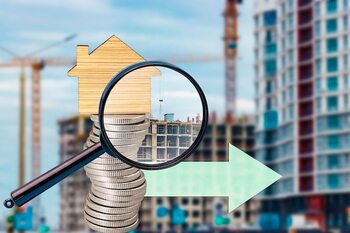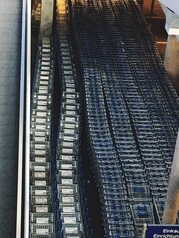The role of social cohesion in increasing real estate value

Social cohesion is a key factor that influences the increase in real estate value, especially in environments where nearby services are abundant. In Costa Rica, where community and quality of life are fundamental, understanding how neighbor interaction and access to services impact property value becomes essential. This article will break down how social cohesion not only enhances the well-being of its inhabitants but also translates into a stronger investment for those looking to acquire properties in areas with a strong sense of community.
1. Definition of social cohesion: What does it really imply?
Social cohesion refers to the strength of the bonds that unite the members of a community, promoting a sense of belonging and solidarity. It involves the existence of strong interpersonal relationships, where individuals not only recognize each other as neighbors but also actively participate in community activities and support collective well-being. This well-developed social fabric is essential for fostering a safe and healthy environment, where people feel valued and heard. Social cohesion not only improves quality of life but also creates a favorable environment for economic development and an increase in property values.
In contexts where there is high social cohesion, it is observed that communities tend to be more resilient to economic and social challenges. Residents are more inclined to participate in local initiatives, which contributes to the maintenance and improvement of infrastructure and public services. Furthermore, these communities often experience lower crime rates, which is a significant attraction for potential property buyers. Thus, social cohesion acts as a catalyst for increasing real estate value by creating desirable environments in which people want to live and invest.
2. The relationship between united communities and real estate appreciation.
The relationship between united communities and real estate appreciation is established through multiple factors that demonstrate how a sense of belonging and social cohesion can transform an area. When residents of a neighborhood feel connected to each other, they are more likely to participate in community activities, care for their environment, and collaborate to solve local problems. This type of interaction not only improves quality of life but also attracts new residents and investors, increasing the demand for properties in that area. Thus, an active and engaged community can become a magnet for those seeking not just a home, but also a lifestyle.
Additionally, social cohesion fosters the development of shared services and resources, such as parks, cultural centers, and recreational spaces. These improvements not only benefit current residents but also increase the area's appeal to future buyers. Communities with strong bonds tend to better advocate for their interests with local authorities, which can result in additional public investments and infrastructure maintenance. Therefore, when considering the purchase of a property, potential buyers often pay attention to the level of social cohesion present in the neighborhood; this translates into greater real estate appreciation by creating an environment where people want to live and stay long-term.
3. Nearby services: The heart of a cohesive community.
Nearby services play a fundamental role in the social cohesion of a community, as they encourage interaction among residents and create a sense of belonging. When people have access to educational centers, parks, supermarkets, and recreational areas within their neighborhood, they are more likely to connect with each other. These interactions not only enrich the social life of the inhabitants but also help establish networks of mutual support that are vital in times of need. Proximity to these services transforms the neighborhood into a place where personal relationships flourish, thereby strengthening the social fabric.
Additionally, access to essential services can be a significant attraction for potential property buyers. Families often look for communities where they can meet their daily needs without having to travel long distances. This not only increases demand for housing in these areas but also raises their real estate value. A well-serviced environment creates a positive cycle: the more accessible the services are, the greater the satisfaction and well-being of the residents, which in turn attracts new tenants or owners interested in investing in that place. Consequently, a cohesive community with adequate services not only improves the quality of life for its inhabitants but also represents a safe and lucrative investment for those looking to acquire properties within it.
4. Impact of parks and public spaces on property values.
The presence of well-designed parks and public spaces not only beautifies a neighborhood but also plays a crucial role in the appreciation of properties. These spaces serve as meeting points where residents can interact, foster relationships, and strengthen the social fabric. When communities have accessible and well-maintained green areas, opportunities for recreational activities and community events arise, which in turn enhances the perception of safety and well-being among neighbors. Potential buyers often value these aspects when looking to purchase a property, as an active social environment can significantly improve quality of life.
Additionally, studies have shown that properties located near parks and other recreational facilities tend to maintain or increase their value over time. This is because access to public spaces contributes to the overall appeal of an area, making it more desirable for families and professionals alike. In Costa Rica, where outdoor living is an integral part of the local lifestyle, having nearby parks not only enhances social cohesion but also translates into a stronger real estate investment. Therefore, promoting the development of these spaces should be a priority for both urban planners and local governments interested in fostering vibrant and prosperous communities.
5. The importance of accessible public transportation in residential areas.
The accessibility of public transport in residential areas is a fundamental pillar for fostering social cohesion and, therefore, increasing property value. When communities have efficient and accessible transportation options, it facilitates the mobility of their inhabitants, allowing people to connect not only with their workplaces and educational institutions but also with recreational activities and essential services. This type of connectivity reduces social and economic barriers, promoting greater interaction among neighbors, which in turn strengthens the social fabric and creates a more attractive environment for future residents and investors.
Additionally, a well-developed public transportation system increases interest in those areas that are less considered in terms of real estate investment. Young families and professionals seek to live in places where they can easily commute without solely relying on a car. This not only contributes to less traffic congestion and a cleaner environment but also elevates the perception of the area as a desirable place to live. Consequently, the implementation of accessible transportation solutions can be a decisive factor in the appreciation of properties within these communities, reflecting how appropriate infrastructure drives both community well-being and local economic development.
6. Education and social cohesion: How schools influence valuation.
Education plays a fundamental role in social cohesion and, therefore, in real estate appreciation. Schools are not only centers of learning but also spaces where relationships between families and neighbors are forged. When a community has quality educational institutions, a sense of belonging and trust is generated, strengthening the social fabric. This positive environment attracts more families, increasing the demand for housing in the area and, in turn, raising real estate prices. The perception of a good education as a valuable asset for children reinforces the desire to reside in areas where schools have a good reputation.
Additionally, community initiatives driven by schools encourage the active participation of parents and other community members. Events such as school fairs, workshops, or extracurricular activities not only contribute to the holistic development of students but also allow neighbors to connect and collaborate with each other. This social interaction creates a safe and welcoming environment that enhances the quality of life and promotes greater cohesion among its inhabitants. As a result, properties located near these well-integrated educational institutions tend to be more attractive to potential buyers and investors, thereby consolidating their value in the real estate market.
7. Community events: Creating connections that raise prices.
Community events play a fundamental role in creating bonds among residents, promoting a sense of belonging that goes beyond the superficial. Activities such as fairs, local markets, festivals, and cultural gatherings not only allow neighbors to get to know each other better, but also foster collaboration and mutual support. When people come together to share experiences and celebrate their local culture, social cohesion is strengthened, contributing to a safer and friendlier environment. This type of interaction generates a vibrant community that attracts both new residents and investors interested in areas with a strong social fabric.
Moreover, community events can be a powerful tool to increase the real estate value of an area. When there is a consistent schedule of activities that involve neighbors, it creates an additional appeal for nearby properties. Potential buyers often look for places where they can establish meaningful connections and enjoy a higher quality of life; therefore, active communities tend to have higher demand in the real estate market. At the end of the day, a cohesive community not only fosters the emotional well-being of its residents but also translates into higher property prices due to the widespread desire to live in environments where everyone feels like an integral part of the whole.
8. Neighborhood safety: A pillar for increasing real estate value.
Neighborhood safety has become a fundamental aspect for those looking to invest in properties, as a safe environment not only protects the well-being of residents but also promotes the stability and development of the community. Areas where neighbors know and collaborate with each other tend to be more effective in identifying and solving crime-related issues. This collaboration generates a sense of belonging that enhances social cohesion, making residents feel more committed to caring for their surroundings. As a result, properties in these areas often experience an increase in value due to the positive perception of the neighborhood.
In addition, a safe community contributes to improving the overall quality of life, becoming a key attraction for potential buyers and investors. The presence of organized groups or neighborhood watch committees can serve as an indicator of an active community that is committed to its environment. This not only deters criminal acts but also creates a conducive atmosphere for recreational and cultural activities, factors that further increase the interest in living in that area. In this sense, strengthening neighborhood security is essential not only to protect current residents but also to ensure a solid long-term real estate investment.
9. Resident testimonies: Experiences that reflect the positive impact.
Testimonies from residents in cohesive communities reveal how interaction and mutual support among neighbors create an environment conducive to personal and collective growth. Many have shared experiences about how community activities, such as local markets or festivals, not only foster friendship but also attract new residents interested in being part of a dynamic and welcoming environment. These accounts illustrate that living in a united community not only enhances quality of life but also contributes to property values by creating a desirable setting where people want to settle.
Additionally, residents highlight how access to nearby services is strengthened by social cohesion. For example, families that actively participate in neighborhood groups find it easier to coordinate the arrival of community resources such as schools, health centers, and recreational spaces. This collaboration not only makes services more accessible but also increases the perception of safety and well-being in the community. Thus, these testimonials reflect a virtuous cycle where strong social cohesion boosts both personal satisfaction and the area's appeal to potential buyers, thereby raising real estate value.
10. Strategies to promote social cohesion in your neighborhood.
Fostering social cohesion in a neighborhood is a task that requires commitment and creativity from its inhabitants. An effective strategy is to organize community events, such as fairs, festivals, or sports activities, that encourage participation from everyone. These gatherings not only allow neighbors to get to know each other better, but also create spaces to share interests and traditions. The social interaction generated at these events can strengthen the bonds between residents, promoting a sense of belonging that benefits both individual and collective well-being.
Another valuable strategy is to establish neighborhood support groups focused on specific issues, such as safety, the environment, or local development. By working together on projects that directly impact their surroundings, neighbors can develop a sense of shared responsibility and collaboration. Furthermore, these initiatives encourage open and constructive dialogue among residents, which is essential for resolving conflicts peacefully and efficiently. This type of cohesion not only improves the quality of life in the neighborhood but also contributes to the increase in property values by creating a more attractive and safe living environment.



